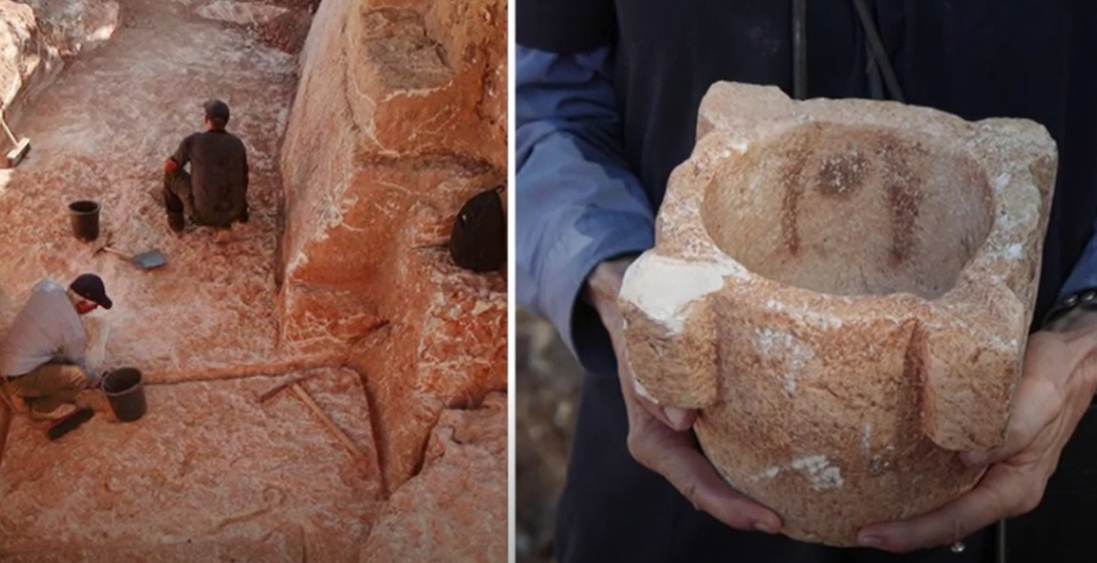In a remarkable archaeological discovery, a team in Israel has unearthed stones that are believed to be part of a path where Jesus once walked. The excavation, located at Mount Hotzvim in Jerusalem, has revealed a large quarry dating back to the Second Temple period, a significant era in Jewish history which coincides with the time of Jesus.
The Israel Antiquities Authority, responsible for the excavation, has reported finding dozens of building stones of various sizes, paths, and tools within an area covering about 3,500 square meters. The dimensions of the stones are impressive, with some measuring up to 8 feet in length, 4 feet in width, and weighing approximately 2.5 tons each. These stones are thought to have been used in the construction of Jerusalem’s streets during that period.
What makes this discovery particularly fascinating is the connection to a street known as “Pilgrim’s Road,” which was also unearthed in recent years in the City of David. The paving stones found there are identical in size, thickness, and geological composition to those excavated at Mount Hotzvim, suggesting a direct link between the quarry and the ancient road.
“The weight of any such hewn block was about 2.5 tons! The impressive size of the stones that were carved from here in the quarry may indicate that they were intended to serve as building stones in one of the many state construction factories that were carried out in Jerusalem at the end of the Second Temple period,” said Michael Tchernin and Lara Shilov, excavation managers from the Israel Antiquities Authority said in the release.

While it cannot be certain, Tchernin and Shilov speculate that, “It can be assumed, with a great deal of caution, that at least some of the building stones carved from here were intended to be used as paving slabs for the streets of Jerusalem of that period.”
The evidence that leads them to such speculation is that, “In another excavation conducted in the City of David in recent years, archaeologists have discovered a paved street (the terraced street – “via pilgrims”) that also dates to the end of the Second-Tac Temple period: amazingly enough, it turns out that the paving stones of this street are identical in size, thickness and geological composition, to the stone tablets issued in the quarry now exposed on Har Hotzvim,” the release said in reference to the stones matching those used to build “Pilgrim’s Road.”
“Pilgrim’s Road” holds great historical and religious significance as it is believed to be the route taken by Jewish pilgrims ascending to the Temple, and by Jesus himself. The discovery of these stones not only provides insight into the architectural practices of the time but also brings to life the stories from biblical times.
The excavation has sparked excitement and curiosity among historians, archeologists, and religious scholars alike. It offers a tangible connection to the past and a unique opportunity to walk in the footsteps of historical figures. For many, this discovery is more than just an archaeological milestone; it’s a bridge to a time and place that has shaped centuries of religious and cultural narratives.












